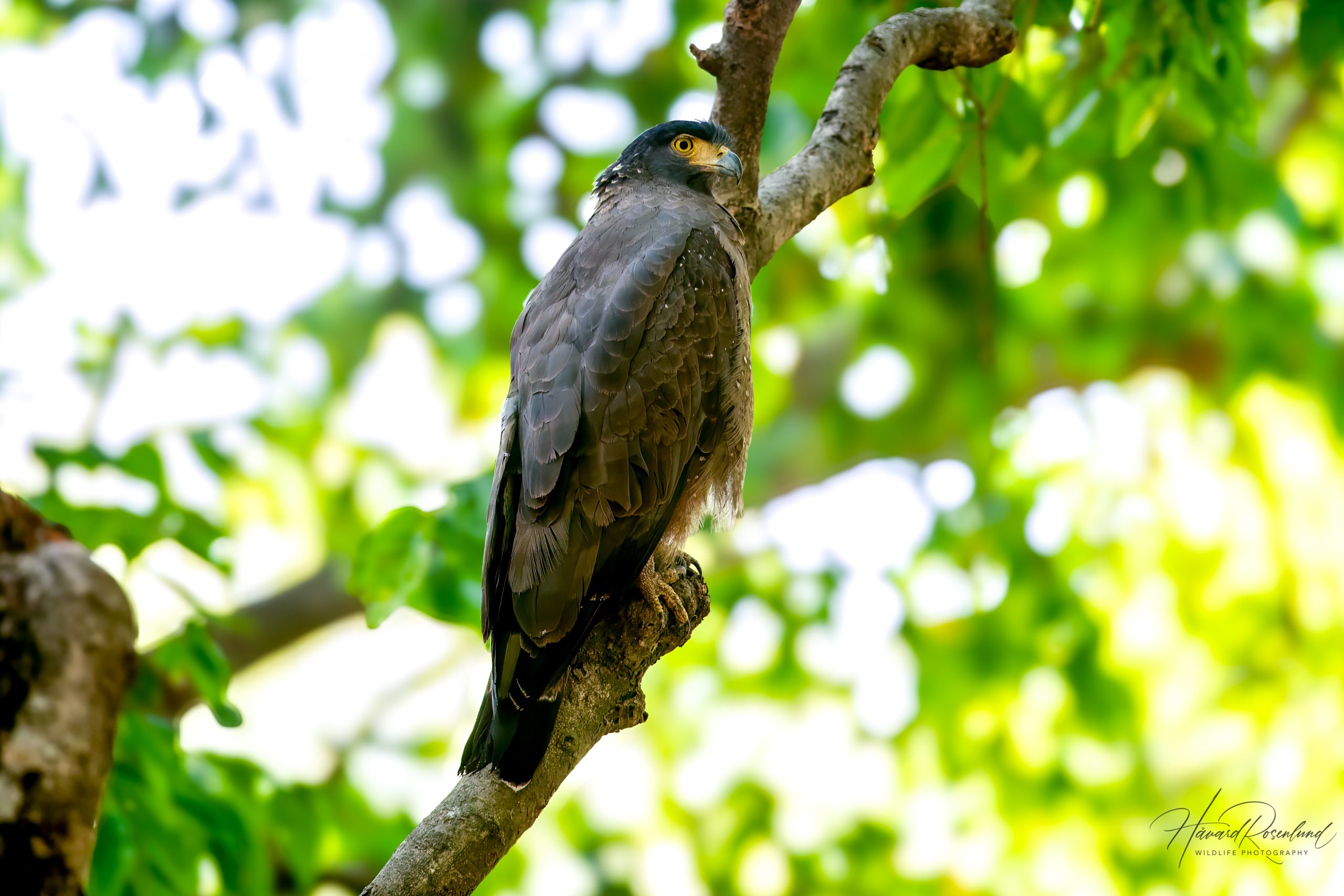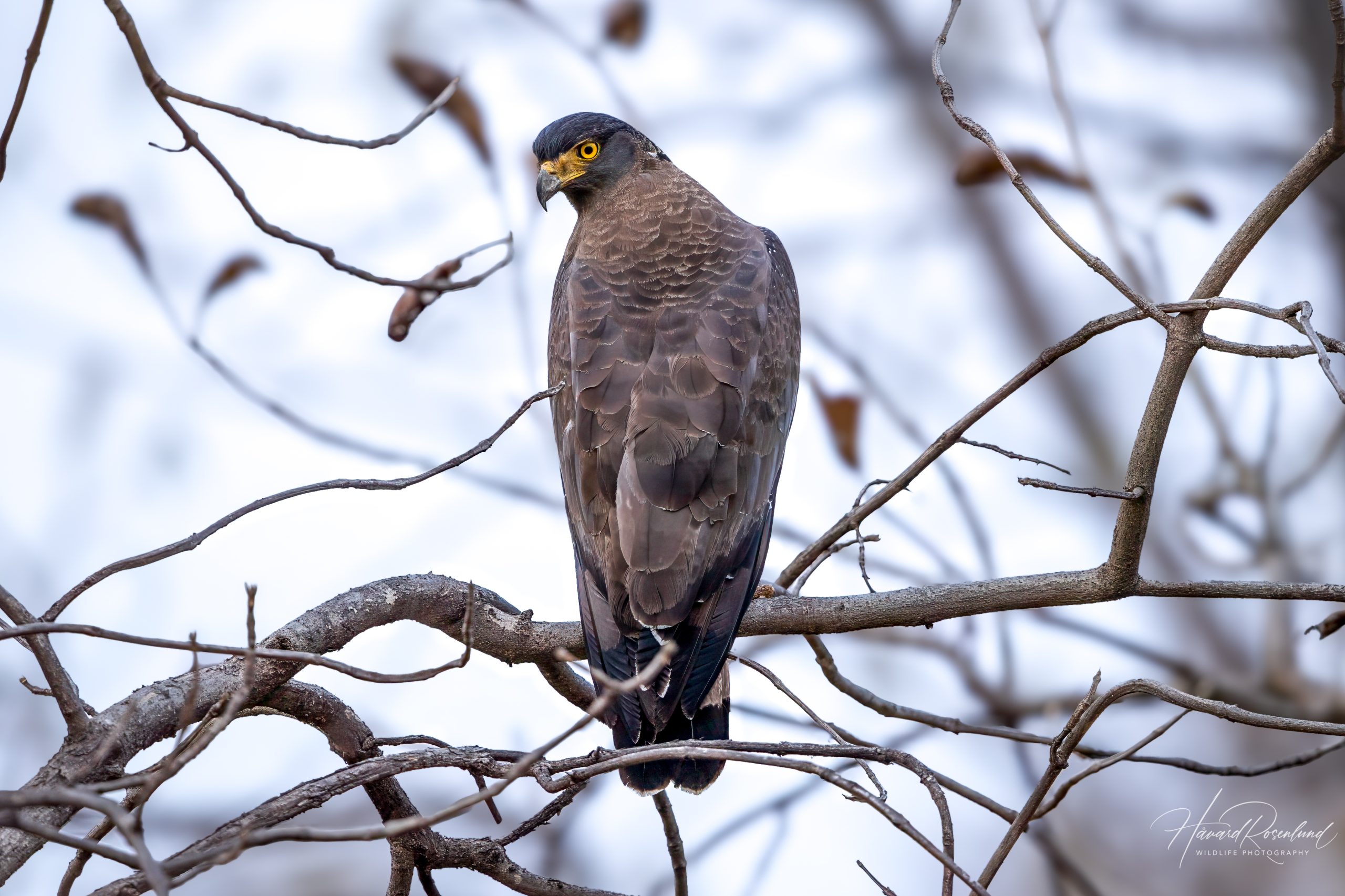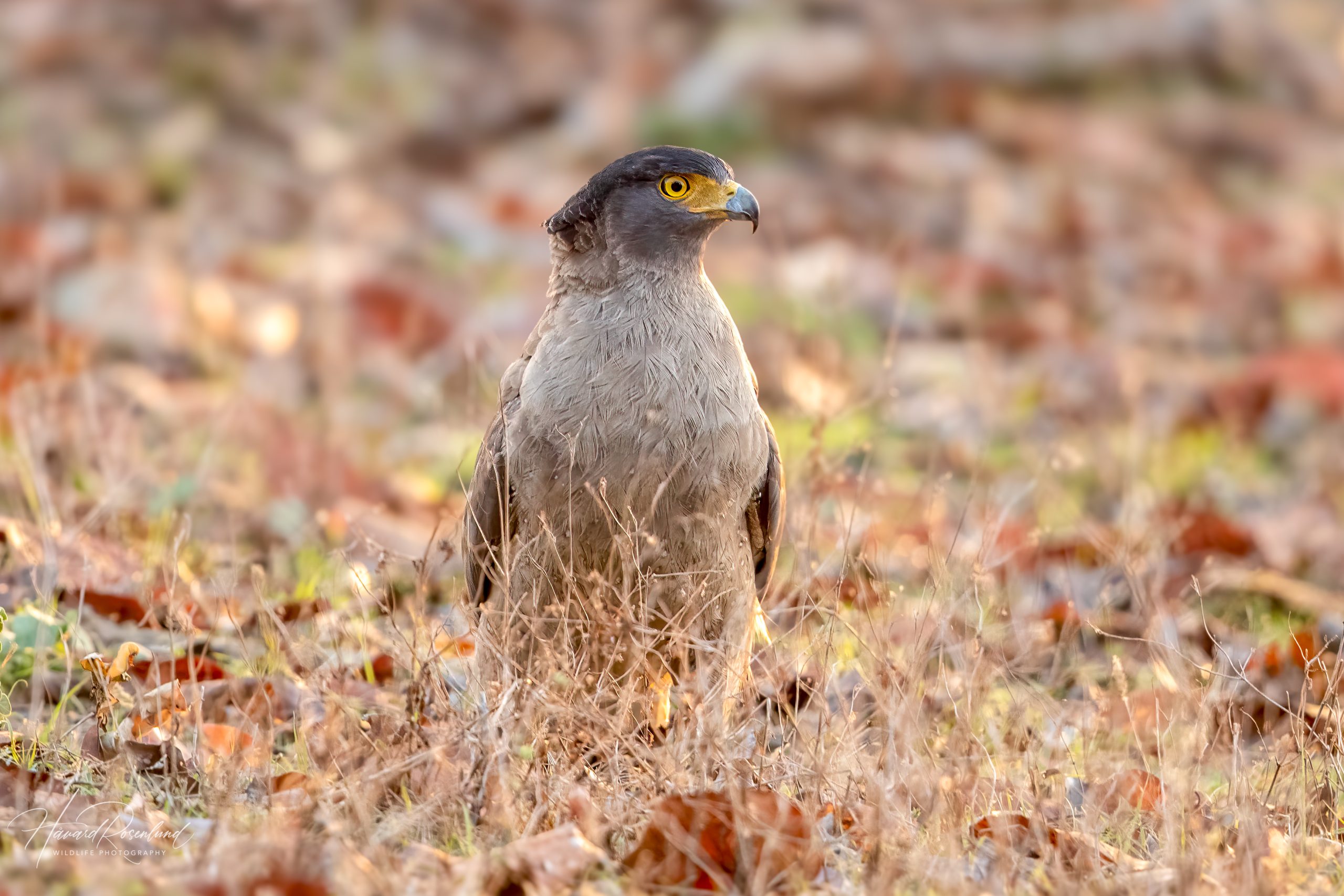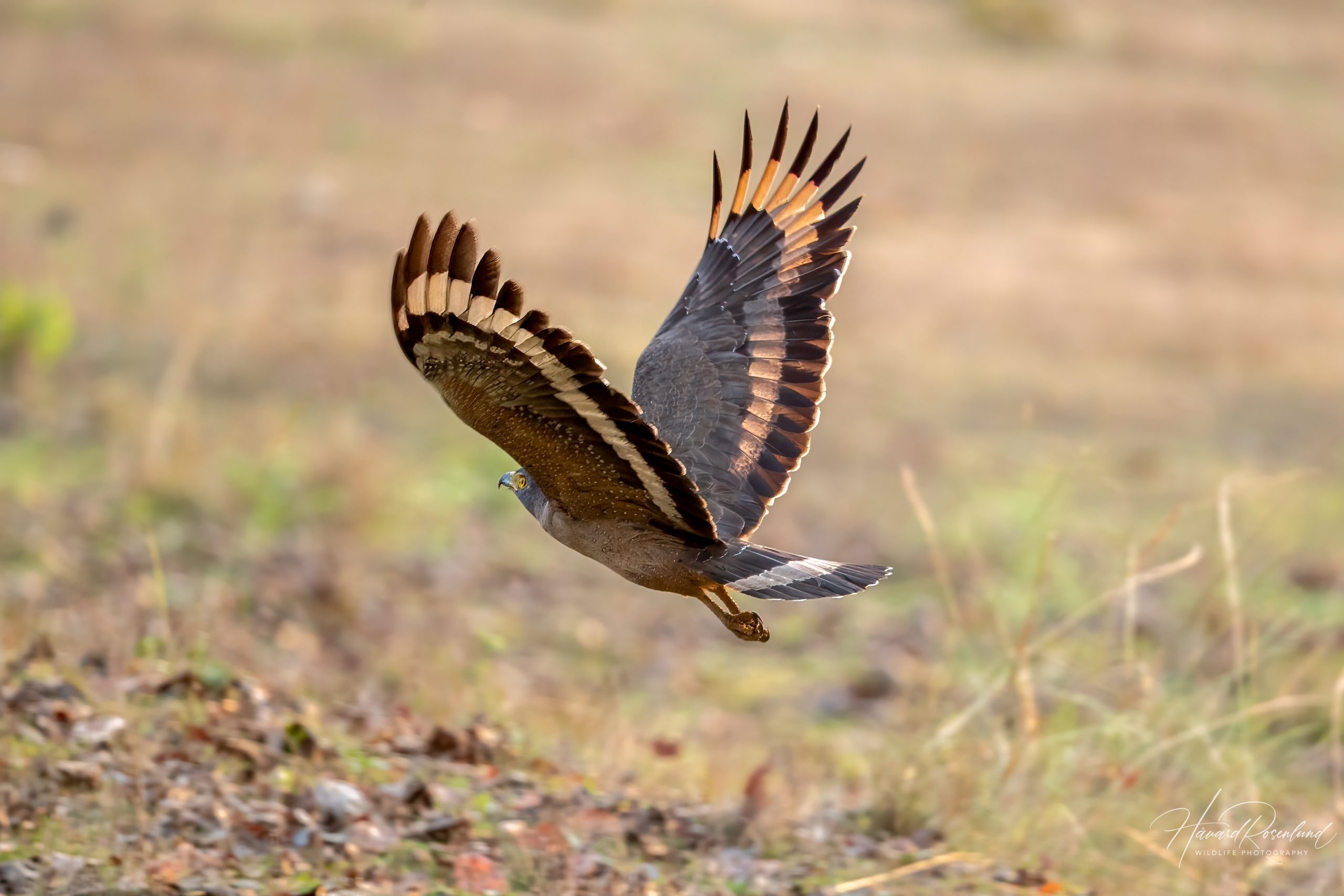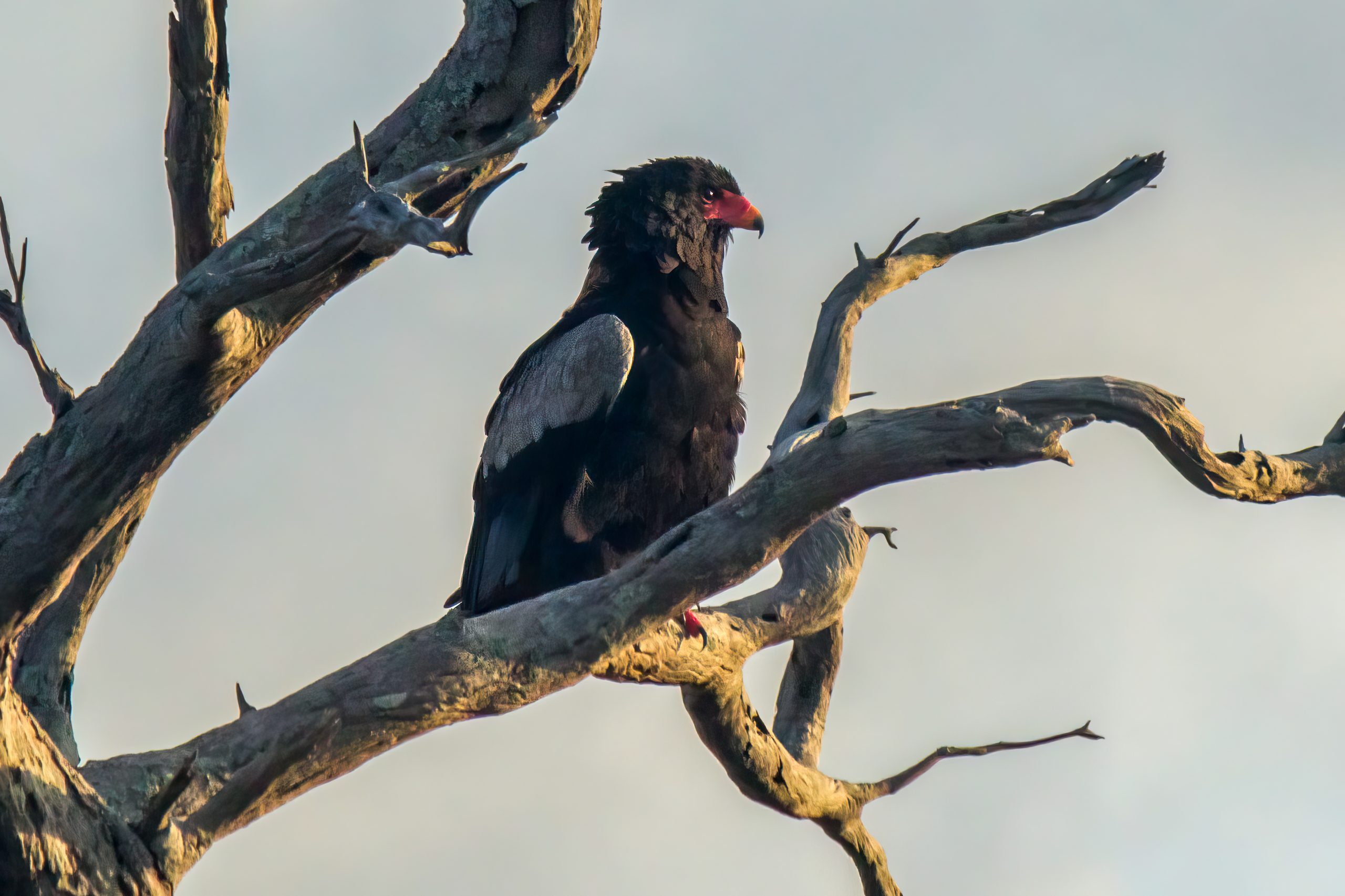Description
The crested serpent-eagle (Spilornis cheela) is a medium-sized bird of prey, primarily found in South and Southeast Asia. Its range extends from the Indian subcontinent across Southeast Asia to Indonesia and the Philippines. This raptor is distinguished by its broad, rounded wings and short tail, which make it adept at soaring. Adults typically measure between 55 to 75 cm (22-30 in) in length with a wingspan of about 120 to 180 cm (47-70 in). The eagle’s plumage is predominantly dark brown, marked by white spots. It has a distinctive crest on its head, which is darker, and its underparts are typically lighter. It has a conspicuous white tail band, and black and white barring on the edge of its flight feathers. A key feature is its bright yellow cere and legs, which are especially prominent during flight. There are several subspecies across its range, with slight variations in plumage.
Diet & habitat
The crested serpent-eagle inhabits a variety of wooded environments, including dense forests, open woodlands, and even plantation areas. It is typically found at elevations ranging from sea level up to 3,000 meters. This adaptability in habitat selection makes it one of the more widely distributed raptors in its range.
As its name suggests, the crested serpent-eagle primarily feeds on snakes, including both venomous and non-venomous species. Its diet also includes other reptiles, such as lizards, and occasionally small mammals and birds. The eagle hunts from a perch, where it scans the ground for movement before swooping down to capture its prey with powerful talons. Its keen eyesight and agile flight are critical for catching elusive snakes in dense undergrowth.
Nesting
Breeding season for the crested serpent-eagle varies across its range but generally falls between December and May. These eagles are known for their elaborate courtship displays, which involve soaring flight, acrobatics, and vocalizations. They are monogamous and form long-term pair bonds. This species has a distinctive, high-pitched, whistling call that is often heard during the breeding season and serves as a territorial signal.
Nests are typically built high in the fork of a large tree, constructed from sticks and lined with green leaves. The female lays a single egg, which is incubated for about 35 to 40 days. Both parents share the responsibility of incubation, although the female does the majority of the brooding while the male provides food. Once hatched, the chick remains in the nest for approximately two to three months before fledging. During this period, both parents are heavily involved in feeding and protecting the young.
Status
The crested serpent-eagle is listed as least concern by the IUCN Red List due to its wide range and stable population numbers. However, habitat destruction and degradation, particularly deforestation and the conversion of forests into agricultural land, pose ongoing threats to certain populations. Some island subspecies are few in numbers and more threatened by extinction. Conservation efforts focus on habitat protection and maintaining large forest tracts to ensure the continued survival of this species.




